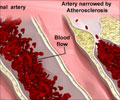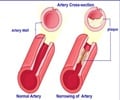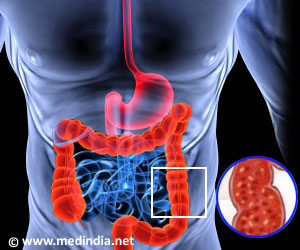Atherosclerosis, or the narrowing of arteries due to build up of fatty deposits, is thought to be a modern disease.

In this paper, by Dr. Gregory S Thomas, Medical Director of the MemorialCare, Heart & Vascular Institute of Long Beach Memorial, Long Beach, CA, USA, and Professor Jagat Narula, Editor-in-Chief of Global Heart and Associate Dean for Global Health at Icahn School of Medicine at Mount Sinai. New York, USA, and colleagues, they suggest potential causes for this modern disease to occur in ancient times.
None of these cultures suffered from significant obesity, lack of physical activity, cigarette smoking, or other well-known 'modern' risk factors that can cause narrowing of the arteries and thus raise the risk of heart attack, stroke, and other cardiovascular problems. However, the authors suggest that a non-traditional cause or causes of atherosclerosis could explain the burden of atherosclerosis in ancient peoples. Thomas comments, "These ancient people were unaware of the germs lurking in the unhygienic environments in which they lived, animals and people living side by side, inadequate sewage, contaminated water. They did not know that the germs amongst which they lived caused infection after infection. In addition to frequent bacterial and viral infections, the ancients likely suffered from lifelong parasitic infestations. Modern medicine, knowledge and antibiotics had not yet arrived."
A strong and prolonged inflammatory effort by the body would have been necessary to fight off the infections that plagued ancient humans. However, this intense inflammatory response may have accelerated the inflammation that occurs when cholesterol, an unwelcome guest, gets into the wall of the artery. Inflammation is an integral part of the atherosclerotic process. Cholesterol is not supposed to be in the wall, thus the body fights it. The process is counterproductive, however, attracting more unwelcome cells in the wall of the artery resulting in a further build up of an atherosclerotic plaque.
As evidence, the authors cite a 1974 investigation into the mummy 'Nakht', a teenage boy who worked as a weaver circa 1200 BCE in Thebes (modern day Luxor, Egypt). The extensive investigation found that Nakht was infected with four parasites, suffering from schistosomiasis, trichinosis, malaria and tapeworm infestation. The authors comment: "If Nakht is representative of those living along the ancient Nile, these populations must have endured enormous, lifelong inflammatory burdens." Other mummies were found to be harbouring tuberculosis infections.
There is precedence of inflammation accelerating atherosclerosis in the modern day. People with conditions of ongoing inflammation, those with rheumatoid arthritis, systemic lupus erythematosus or human immunodeficiency virus infection, experience premature and aggressive atherosclerosis leading to early heart disease and death. Thomas and colleagues suggest the inflammatory process, necessary to fight off infection in ancient times in particular, could backfire by promoting atherosclerosis in the absence of modern risk factors.
Thomas and Narula comment that the bulk of our modern risk factors were discovered several generations ago, before genetic testing and modern biomarker analysis. "Each year we learn more and more about the impact of the human genome and molecules in our blood, and so to believe we have already uncovered all the causes, or risk factors, of atherosclerosis may be wishful thinking. Using the past to predict the future, as these ancient people unexpectedly had atherosclerosis, we need to continue to search for other potential fundamental causes of atherosclerosis. The discovery of new causes could dramatically reshape the frequency and impact of atherosclerosis today."
Source-Eurekalert
 MEDINDIA
MEDINDIA



 Email
Email







